
Did you know that word-of-mouth or referrals make up anywhere from a quarter to half of all purchase decisions? Not only do referrals work, but business-to-business referrals have a significantly higher conversion rate.
So it’s no doubt that any sensible business will want to incorporate a referral program into their marketing strategy. This holds good, especially for businesses that deal with products that directly affect customers in a big way such as insurance.
Insurance is something that covers you during the worst-case scenario. Something you don’t necessarily expect to happen and hope you won’t have to deal with. So it’s only natural that you’re likely to go with an option recommended to you by someone you trust. This is because we look at a recommendation from someone as proof that a service or product is good.
If you’re an insurance agency, then you want to incentivize behaviour that leads to more referrals because ultimately, it’s good for business. In fact, if you’re not actively ensuring that your business is being referred by word of mouth or social media, then chances are you’re hurting your business.
What is referral marketing?
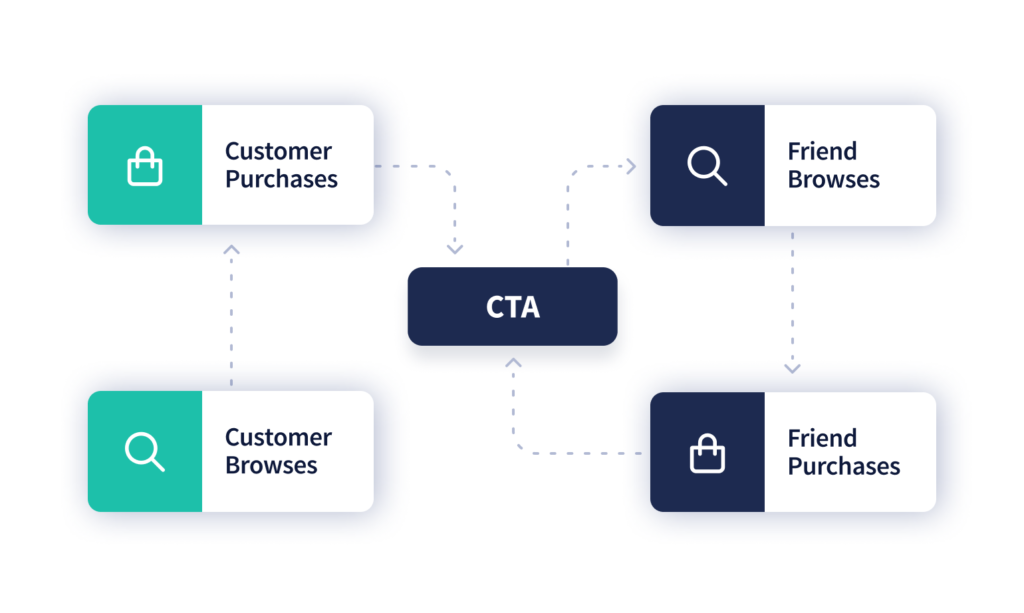
Simply put, referral marketing is where a business designs a system where word-of-mouth recommendations are incentivized. Through referral marketing, existing customers will likely recommend the business to friends, relatives, and family members.
Referral marketing can also happen organically, irrespective of whether marketers get involved in the process. However, while this situation does sound ideal it may not happen often enough as customers often get busy and forget to make recommendations to their friends.
As a result, marketers need to step in to incentivize this behaviour. Customers are less likely to forget when there’s something in it for them. Keep in mind however that while customers need to be incentivized to mention positive things about your business, they’re more than likely to mention anything negative and this is why it’s so important to set up positive incentives.
Referrals don’t necessarily have to come from existing customers. If your insurance agency has an image that people can trust, then word of mouth referrals can come from friends who’ve never done business with you yet but intend to, family members who trust you, and even other insurance agents. However, your bread and butter will still be paying customers.
There may also be local laws worth considering about what is legally allowed in referral marketing both in terms of the incentive as well as the party that is selected to receive the incentive. Take some time out to read up on what applies to your insurance agency depending on where your agency is based and what sort of policies you deal in. Nuance is a big part of it.
Why referral marketing for insurance agencies works
When it comes to insurance, trust is everything. Consumers are human beings at the end of the day and trust the opinions of real people a lot more than they trust what advertising tells them. To a large percentage of people, advertising is seen as ‘sales-y’ and predatory.
Add to the mix the fact that insurance is supposed to cover you in worst-case scenarios, you want to go with a recommendation from a real person and not an advertisement you’ve seen on television or social media.
When you make the most of this already existing dynamic by incentivizing customers to make recommendations to their friends and family, then the results speak for themselves. This unique predicament is what makes referral marketing incredibly effective especially when it comes to insurance agencies.
There’s one more reason that referral marketing works so well for insurance agencies and that is “reach”. A decade ago, an individual’s reach was limited to just his friends and family. Maybe a few close relatives he or she could call over the phone and make recommendations to.
Today, however, the average person has a reach in the hundreds and even thousands. Some influencers even have a reach of millions of followers through social media. When you factor in the fact that people trust other people, a single referral from a social media influencer can bring in hundreds to thousands of new customers.
Steps to create a winning referral marketing strategy
Referral marketing is a marketing strategy at the end of the day and like all strategies, it can be fine-tuned and optimized to deliver results. This means that referral marketing can be gamed to get the optimum return for your agency. In fact, it’s not too hard to do it. Let’s get right to it.
1. Set your goals.
When setting goals for your referral marketing program, you need to ensure that your goals are clear, well defined, and well thought out. They need to be driven by data and not arbitrarily decided upon based on a whim. Make sure they’re achievable and not unrealistic.
Next, you need to be tracking the right metrics to ensure you’re on track to hitting your goals. Most marketing tools today have so many metrics they keep track of that it’s easy to get lost in the data. Instead of keeping track of pointless metrics that don’t help you see the bigger picture, focus on just a few, preferable ones you’ve selected after deciding what your goal is.
While it’s perfectly acceptable for your short-term goals to change from month to month based on the issues that crop up, your long-term goals can be a little more rigid. Some important goals you can focus on are:
- Increasing customer loyalty: The more loyal your customers are, the more likely they are to keep making recommendations.
- Attracting higher lifetime value customers
- Increasing the overall number of customers but reducing the customer acquisition cost.
- Increasing the average purchase each customer makes through upsells and cross-sells.
2. Create a unique referral marketing strategy.
Your referral marketing strategy needs to be specific and based on what actions you’re trying to drive. Are you trying to increase app downloads? Or drive sales? Are you trying to increase sign-ups for free trials or just capture new leads? Based on what goals you’ve set you can begin crafting a unique referral marketing strategy.
Take some time to understand your audience and what gets them going. Educate yourself about your customer base and try and understand their pain points. What makes them tick and why are they buying your product? What are they currently unsatisfied with about your service and how can you make things better for them?
A unique referral marketing strategy takes into account all these points. You also need to consider your unique selling point and what makes your insurance agency stand out. Incorporate this into your referral strategy.
Finally, put yourself in your customers’ shoes and ask yourself what would make you want to recommend your own product. If you can’t think of anything then you’re in trouble. Look at things from the point of view of the person to whom the recommendation is being made. What makes this recommendation worth acting on? These are essential questions you need to answer if you want to craft a unique referral marketing strategy.
3. Ask for referrals the right way.
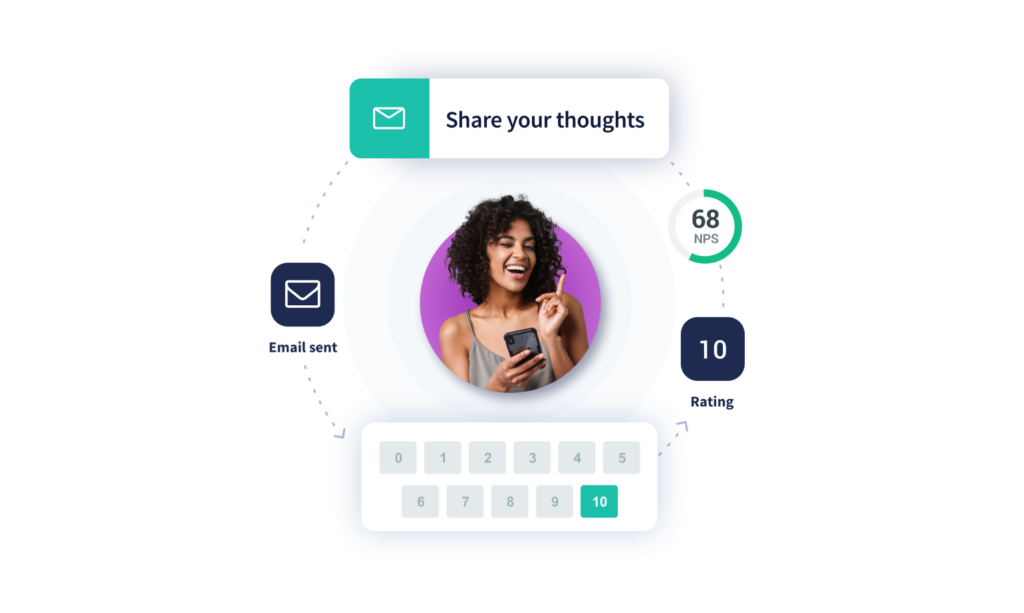
There is nothing more annoying than a pushy ask for a referral. Not only does it feel spammy but it immediately turns customers off and makes them less likely to want to promote your business or say anything positive about it.
The first thing to do is make sure you’re reaching out to the right people when you’re asking for referrals. You want to reach out to people who are specifically interested in what you have to offer. Also, make sure you’ve spent some time building a relationship first so that the “ask” feels natural.
Pro-tip: With Pathway, you can send out an NPS® survey through email to your happy policyholders and customers. Depending on the feedback you receive, you can create a new email list segment for “Promoters” and send referral requests to those happy with your services.
This can help you get feedback from customers who are happy with your agency while simultaneously having them promote your services to potential new customers.
When you decide to approach customers, do it at a time that is convenient. Especially if it’s a phone call. Ideally, you should be asking at a time of the day that’s convenient and isn’t disturbing anyone. If you’re asking in person, do it when your customers are happiest and you’re more likely to get a yes.
If you’re asking via email or through a message, make sure it’s personalized and gives special attention to the customer. You want to be empathetic when you reach out and as genuine as possible so that your customers are more than willing to give you a referral.
4. Offer incentives that work.
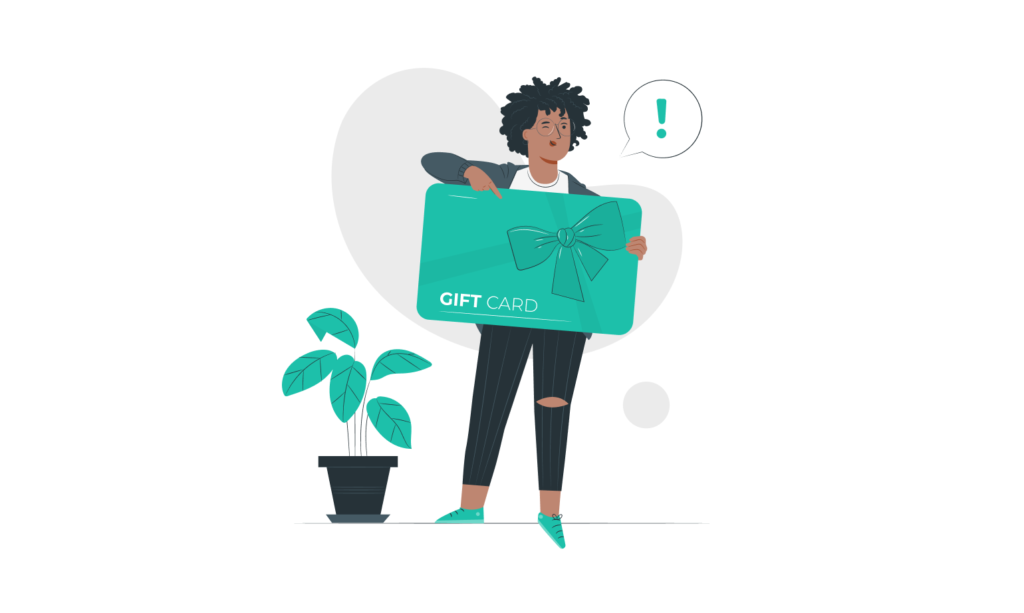
If you’re trying to incentivize behavior, then you need to be offering incentives that work. This means that what you offer should be motivating enough to encourage customers to make a referral. Let’s take a look at some of these incentive structures:
- One-sided referral incentives
- Two or double-sided referral incentives.
With one-sided referral incentives only one person, either the referrer or the referred gets the incentive. Usually, it’s given to the existing customer as this boosts customer loyalty but some programs also give the benefit to the new customer or the referred.
These programs are usually best for new businesses that need to quickly land new customers, and work well when the product or service offered is reasonably priced. Since the product being offered is not very expensive, the referred is likely to make a purchase even without a discount or incentive, while existing customers get a reward for each new referral they bring in.
If the reward is for the referred, then it works best with products or services that are slightly more expensive as the added discount can push the new customer to make a purchase.
In a two-sided referral incentive, both the referrer and the referred get some kind of benefit. It’s not necessarily the same reward but some sort of incentive is offered to both parties. This creates a win-win situation for both parties and is best for businesses that have enough resources to give benefits to both customers.
Some important incentives that can be given are:
- Cash
- Swag
- Gift cards
- Donations
- Discounts
- Free coverage points
- Free subscription services
Based on your business and your customer, you can select the incentive that works best for your insurance agency.
5. Create a loyal base of advocates on social media.

This goes without saying, insurance agencies that want to set up a referral marketing program need to get the word out as much as possible and there’s no better way to do this than on social media.
Not only are people likely to share your posts on their story but they do this much quicker than they would recommend it in conversion to a friend. Since most people have a much larger reach on social media than they do in real life, it’s a no-brainer that building a loyal fanbase on all your social media platforms is the best way to go about ensuring the success of your referral marketing program.
Keep in mind that you can still give discount codes under posts so that anyone who reads what you have to say can get the additional benefit. A loyal fanbase will also usually leave positive comments under your posts which can help drive engagement and make you go viral.
Most people considering making a purchase also read the comments under existing posts before deciding if they want to give a business a chance or not. For this reason, it’s imperative you begin building a loyal fanbase.
One important factor to consider is that a customer that is loyal is not always necessarily a brand advocate. Loyal customers need to be converted into brand advocates by incentivizing them to be vocal about their love for your brand. This is usually done through social media giveaways or freebies for sharing their experience with your brand online.
6. Set up partnerships with non-competing businesses.
A great way to keep leads coming in is by getting a business that isn’t your competition to make referrals for you. This usually works best when the other business is one that works well with yours. For example, if you’re an insurance agency then you can get a financial planning consultant to recommend your insurance agency to clients that are planning their finances.
You can give your referral partner a commission off every client they refer to you. This can act as an incentive. Other incentives are you can refer their business to customers that you receive first and develop a little partnership.
When setting up a referral partnership with a non-competing business, make sure you have a referral agreement drawn up. This helps make the partnership smooth and the onboarding experience can be quite pleasant as well. You also need to make sure that your partner understands the business and your ideal customer as well as the unique selling point.
Just because a business agrees to promote you, does not mean they understand how to sell your service. Have a training session with them before and ensure that you walk them through all the issues they may potentially face.
Be sure not to select any business that could possibly have a reason to not support you or is a potential competitor. This means they could be in direct or indirect competition with you and your product or service or even have a personal reason for not wanting to promote your business such as an already existing referral partnership with a competitor. Ensure you avoid this by doing your due diligence, as it can be quite detrimental, especially in the insurance business.
7. Automate the process with software.
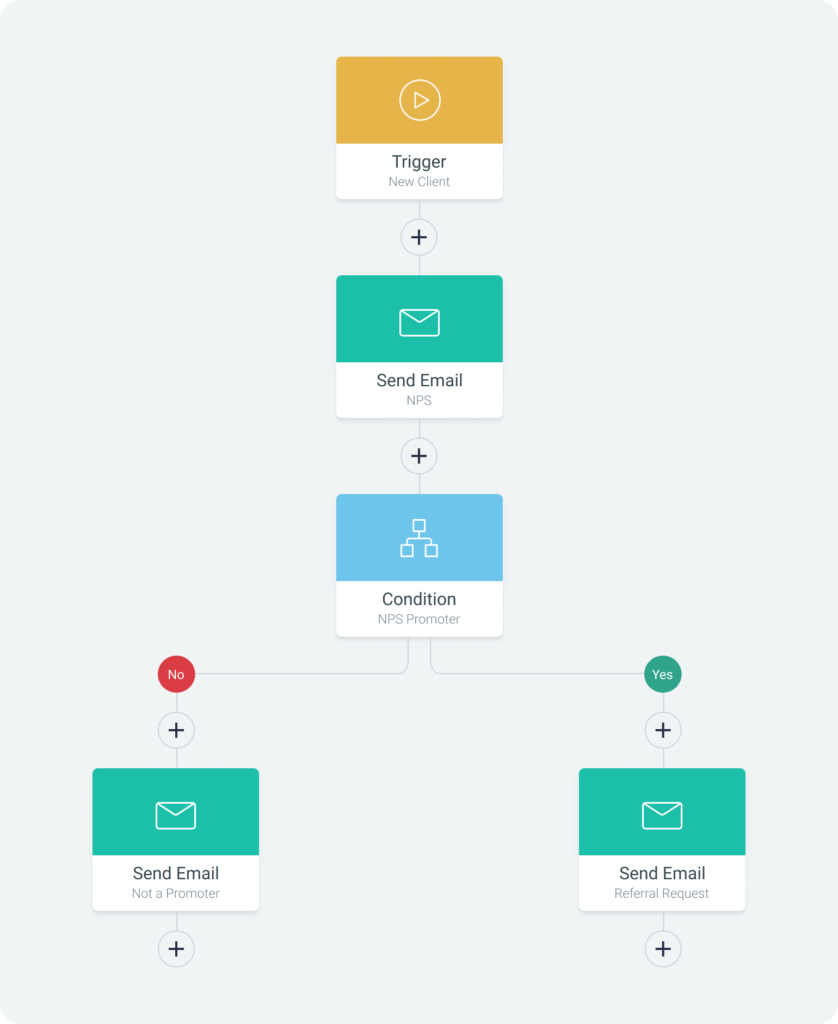
Referral marketing can be quite tedious if you’re trying to manually keep track of all your referrals and who is owed what percentage as a referral fee. Not only is this annoying but it takes away time from other important aspects of your business.
Often this can even result in forgetting to log details of certain referred clients which can cause problems and trust issues with referral partners. This is quite detrimental to the success of your referral marketing program and bad for the overall image of your insurance agency.
Instead, with the help of insurance marketing automation software, you can easily let bots do most of the heavy lifting. This also saves enormous amounts of time as all the repetitive tasks can be automated saving you effort as well as time.
You can automate everything from issuing payment reminders to making coverage recommendations, streamlining renewals and automating the billing process, and even streamlining data collection from clients.
Automation also allows you to elevate the entire level of service you can provide to customers and that’s why it’s worth investing in. Most automation software also comes with additional powerful features that allow you to offer customers more than ever before such as a self-service customer support portal or document delivery to the appropriate client along with tailored messages.
8. Track, analyze, and optimize your efforts.
The best insurance marketing campaigns all hit their goals because they’re constantly tracking metrics. Then analyze the results and make adjustments to their strategies in order to optimize the effort they put in to get the best ROI possible.
It can be disorienting, especially with all the available data that most software collect but a good practice is to focus on a few important metrics and what those numbers mean for you, based on the goals you have selected for the campaign.
Some important metrics you can track when dealing with a referral marketing campaign are:
- The Viral Coefficient: This is the total number of registrations per unique inviting user. Typically a sustainable viral factor is anywhere from 0.15 to 0.25. Anything higher is even better.
- Participant Conversion Rate: This is the number of unique visits to your campaigns page that turn into participants.
- Participant Share Rate: This is the average number of unique shares per campaign participant.
- Invitation Click-Through Rate: This is the percentage of people who click your participant’s invitation to your campaign.
- Invitation Conversion Rate: This is the percentage of people coming from invitations that become participants of your campaign.
These are some of the more important metrics worth tracking in order to analyze and understand how your campaign is going. Focus on understanding where your campaign needs to work and what the numbers tell you you need to improve.
Grow your referral leads with Pathway!
If you’ve made it this far then you now know that referrals are highly effective in terms of conversions. You also have a solid understanding of what it takes to start and nurture a successful referral marketing plan.
Referral marketing is also cost-effective in comparison to traditional advertising however there is still a cost to incentivizing referrals. Based on your business you now know how to select the appropriate incentives.
You can use automation software such as Pathway to automate the monotonous and tedious repetitive tasks, thus freeing you up to work on the parts of the business that require your full attention such as setting and adjusting goals and tracking KPIs and other metrics so that you can analyze and improve constantly.
If you do everything right then it’s only a matter of time before your referral marketing strategy starts paying off and your insurance agency can reap the rewards. So what are you waiting for?
Get started with Pathway today!

![How to Personalize Customer Experience with Insurance Marketing Automation in 2025 [Proven Strategies] 7 How to personalize customer experience in insurance](https://blog.pathwayport.com/wp-content/uploads/2025/09/blog_banner_How-to-personalzie-cusotmer-experience.png)
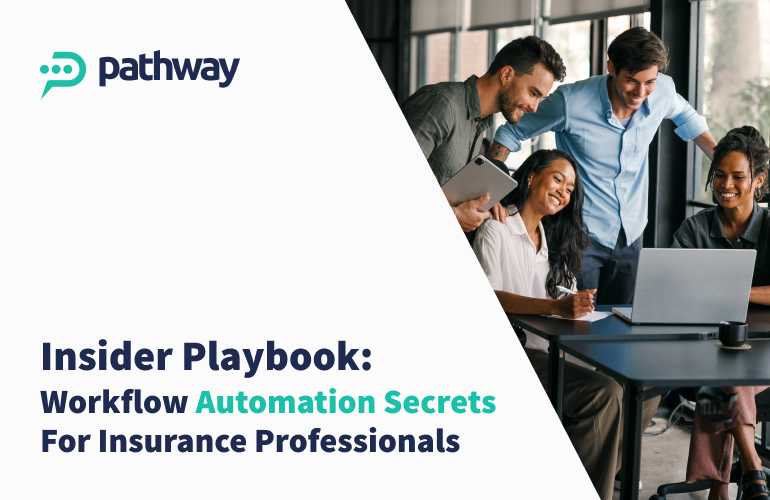

![How to Personalize Customer Experience with Insurance Marketing Automation in 2025 [Proven Strategies] 10 How to personalize customer experience in insurance](https://blog.pathwayport.com/wp-content/uploads/2025/09/blog_banner_How-to-personalzie-cusotmer-experience-150x150.png)

Leave a Comment
Comments:
I genuinely enjoy looking at on this website, it contains fantastic articles. “Never fight an inanimate object.” by P. J. O’Rourke.
Comment by Pandora Skufca on May 1, 2022 at 21:41I am always thought about this, thankyou for posting.
Comment by gralion torile on May 5, 2022 at 12:47Thank you for sharing with us, I conceive this website genuinely stands out : D.
Comment by zoritoler imol on May 9, 2022 at 14:02